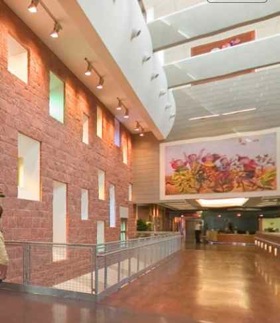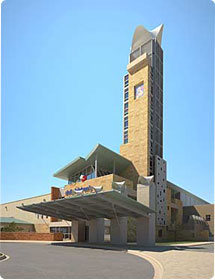 Unique among its peers, Dell Children’s Medical Center of Central Texas is the first healthcare facility in the world to achieve a LEED Platinum Certification by the U.S. Green Building Council.
Unique among its peers, Dell Children’s Medical Center of Central Texas is the first healthcare facility in the world to achieve a LEED Platinum Certification by the U.S. Green Building Council.
LEED (Leadership in Energy & Environmental Design) certification standards are difficult to meet for any building, but are especially tough for hospitals. Because they operate around the clock, hospitals are tremendous energy users. According to the Seton Family of Hospitals, the healthcare provider that opened the facility two years ago, hospitals comprise some 4% of the world’s building stock, but consume 8% of the energy. Many LEED certified buildings — typically commercial office structures — are designed for specific occupancy hours and will not face fines or other regulatory sanctions, like hospitals do, if the indoor air quality slips below specified levels.
“There was no doubt in our minds,” said Phil Risner, LEED AP project manager and building systems network engineer for Seton, “that being green had real, positive effects on both the environment and our healthcare delivery capability.”
Before the design even began Dell Children’s decided to pursue Platinum certification instead of the lesser Gold and after their rating was judeged in the six key LEED categories, Sustainable Site development, Water Efficiency, Energy & Atmosphere, Materials and Resources, Indoor Air Quality, and Innovation & Design, they earned 54 points, out of a possible 69 — enough to win the prestigious Platinum.
“The materials used in the construction of this hospital are all native to Texas,” said Alan Bell, Director of Design and Construction. “The seven courtyards exemplify seven specific eco-regions of the children who live in our 46-county service area. You’ll notice a part of many communities around Austin are going into the making of this facility.”
Other features include the hospital’s interior courtyards (described as the “lungs of the building”), the reuse of the materials from the existing site, as well as daylighting and natural materials. Many measures were taken to help conserve energy at the hospital such as motion sensors to turn off lights and high efficiency lights and air conditioning. Light colored sidewalks and reflecting roof materials help reduce cooling costs. Water is conserved with low-flow faucets and by using potable (non-drinkable) water to irrigate plants in the building as well as the drought-resistant landscaping outside. Finally, the hospital not only recycles their waste today, but it recycled 91 percent of its construction waste during the building process.
Building Automation and LEED
 Of critical importance to Dell Children’s achieving the LEED designation was attaining the points associated with Energy & Atmosphere and Indoor Environmental Quality.
Of critical importance to Dell Children’s achieving the LEED designation was attaining the points associated with Energy & Atmosphere and Indoor Environmental Quality.
Central to this aspect of the project was the design and implementation of a building automation system, provided by the Building Technologies Division of Siemens Industry, called the APOGEE®. This control technology was essential to achieving optimized energy performance.
Located in Austin, Texas, Dell Children’s Medical Center provides 169 beds as the largest hospital dedicated to the care of children in the region.




















I live in Austin, and this article makes me feel so proud.
Very cool!